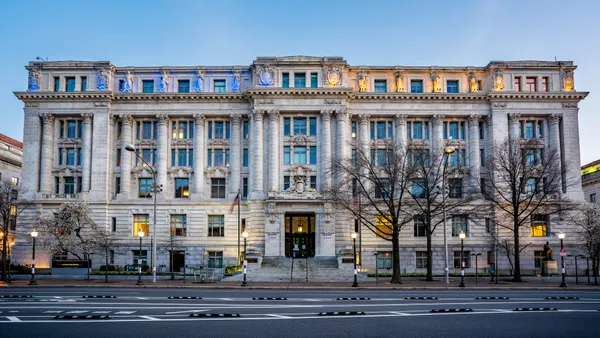Dive Brief:
- This week, the National Restaurant Association came out against H.R. 582, or the “Raise the Wage Act”, proposed legislation that would increase the federal minimum wage from the current $7.25 per hour to $15 per hour throughout the next five years.
- According to the NRA, the bill would suppress new job creation in the restaurant industry — the second-largest private sector employer in the country. The organization also claims that mandating $15 an hour would impose undue harm on small business owners.
- H.R. 582 also includes a proposal to eliminate the tip credit. Recent attempts to eliminate the tip credit in Maine, Michigan and Washington, D.C., have failed.
Dive Insight:
The proposed minimum wage increase takes into account inflation from 2009, when the current $7.25 per hour was established. The stagnancy of the federal minimum wage throughout the past decade inspired the Fight for $15 Movement in 2012. Some progress has been made since then — about 20 states increased their wages on Jan. 1, on top of the 18 states that did so in 2017.
The tide on this issue is clearly changing. In the fall, for example, voters in deep red states like Arkansas and Missouri approved increases. Still, as restaurant operators continuously navigate headwinds like food and technology costs, labor is the number one cost for restaurants.
“Almost a third of an operator's costs are going to labor, so anything that touches that or threatens to increase that number even more will have a big impact," Victor Fernandez, vice president of insights at TDn2K, told Restaurant Dive in December.
Labor has been a major narrative for restaurant companies big and small. However, the main concerns from 2012 — namely mass closures and position eliminations — haven’t really materialized. Restaurant companies have simply figured out how to better navigate added labor pressures, incorporating efficient technologies, trimming bloated G&A expenses, refranchising and for some, increasing some menu pricing.
Labor pressures are expected to remain high for the foreseeable future as jurisdictions figure out how to catch up. That’s where the NRA’s positioning takes hold. The association isn’t concerned so much about an increase as it is a blanketed and required increase: “Mandating a $15 per hour starting wage across the country fails to recognize the simple economic reality that not all communities are the same. What might be right for California or New York would have stifling impacts to restaurants and other small businesses in areas where workers do not face the cost of living they do in major cities,” Shannon Meade, NRA’s vice president of public policy and legal advocacy, said in a press release.
Just a short time ago, $15 seemed near impossible for the thin-margined restaurant industry, but it has since become a reality in some California and New York locations, while Seattle pushes for $16. Comparatively, Missouri’s new minimum wage is $8.60, so it is clear cost-of-living disparities exist, underscoring the NRA's objection.
But it also begs the question as to whether or not $8.60 is sufficient. Even though it’s an increase, is it enough? According to the Bureau of Labor Statistics’ consumer price index, prices in 2018 were 17.05% higher than they were in 2009. In Missouri, $8.60 is an 18.7% increase over $7.25.
The NRA also claims the elimination of the tip credit will harm employees and restaurants. Tipping, the organization opines, creates major earning potential and facilitates better guest service.
Perhaps the bigger challenge for restaurants is the need to navigate labor pressures in the midst of the tightest job market in nearly 50 years. Offering competitive labor rates — mandated or not — allows restaurants to better recruit and retain experienced, trained staff.








